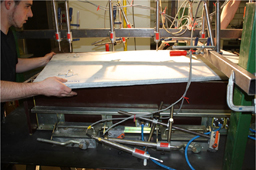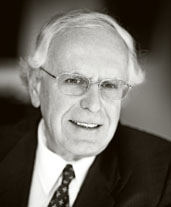In Kaiserslautern trafen sich in der vergangenen Woche rund 180 Professoren und NachwuchswissenschaftlerInnen zum Doktorandensymposium 2010 des Deutschen Ausschusses für Stahlbeton. Dabei ging es – natürlich – um den Austausch wissenschaftlicher Ergebnisse, aber es gab auch zwei Wettbewerbe. Zum einen war ein Preis „Wissenschaftsreportage“ ausgeschrieben – weil „kreative und innovative Leistungen der Bauforschung in der Öffentlichkeit oftmals keine angemessene Beachtung finden“. Darauf werden wir im BauBlog noch zurückkommen, aber soviel sei schon verraten: Für einen ersten Platz reichte es leider nicht, aber zwei der fünf Dresdner Delegierten wurden mit einem Sonderpreis ausgezeichnet: Dipl.-Ing. Gregor Schacht und Dipl.-Ing. Alexander Lindorf. Wie gesagt: Ihre Reportagen werden hier folgen!
Siegreich war das Dresdner Team aber im zweiten Wettbewerb. Wie am Freitag schon quasi live getwittert, schnitten die Dresdner beim UHPC-Wettbewerb am besten ab. UHPC steht für Ultra High Performance Concrete, zu deutsch Ultrahochfester Beton. Beim Wettbewerb ging es darum, eine punktgelagerte Platte aus Hochleistungsbeton anzufertigen, die bei geringem Gewicht eine möglichst hohe Tragfähigkeit erzielt. 30 Kilo sollte die Platte selbst höchstens wiegen, die Abmessungen waren natürlich auch festgelegt: genau 1400 mm x 800 mm. Drei unterschiedliche Platten hatte das Dresdner Team hergestellt – wobei eine leicht über 30 Kilogramm wog und von vornherein mit der Bemerkung eingeschickt wurde: „Wir wissen, dass sie zu schwer ist – aber bitte prüft sie dennoch außerhalb der Wertung!“
Die Nachwuchsforscher vom Institut für Massivbau und dem Institut für Baustoffe hatten freilich mit allen drei Platten die Nase vorn. Frank Schladitz vom Institut für Massivbau: „Das war eine echte Teamarbeit. Neben mir und Dr. Marko Butler vom Institut für Baustoffe als Betreuer haben vor allem die beiden Studenten Mario Liebelt und Marc Koschemann geholfen, das Projekt zu realisieren!“ Außerdem mit dabei beim Betonieren waren Rainer Belger, Daniel Ehlig, Dr. Frank Jesse, Enrico Lorenz, Katrin Schwiteilo und Dr. Kerstin Speck. 29,93 Kilonewton pro Quadratmeter betrug die Traglast von Dresden II – mehr als doppelt soviel wie die des Zweitplatzierten vom Team Braunschweig (14,2 kN/qm) und mehr als das Dreifache des Drittplatzierten (Firma durcrete, 8,83 kN/qm). Alle drei Platten wogen annähernd gleich viel: ca 29,5 kg. (Die anderen beiden Platten aus Dresden lagen mit 27,38 kN/qm und 25,14 kN/qm ebenfalls weit über den Werten des Feldes – aber gewertet wurden die Mannschaftsleistungen.)
Woran es lag, dass die Dresdner Bauingenieure so gut abschnitten? „Wir haben hier das Know-how sowohl im Bereich UHPC als auch Textilbeton. Die Siegerplatte war hergestellt aus einem UHPC mit einer dreilagigen Carbonbewehrung: Die Mischung macht’s!“


